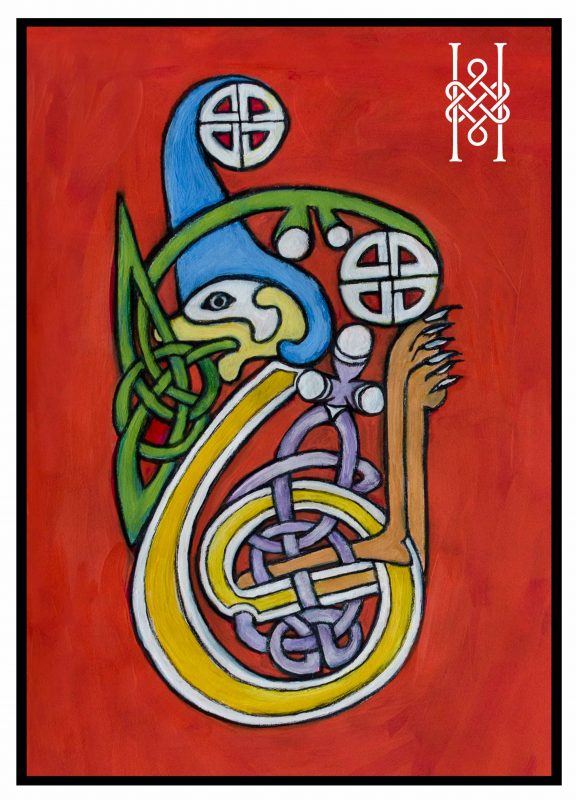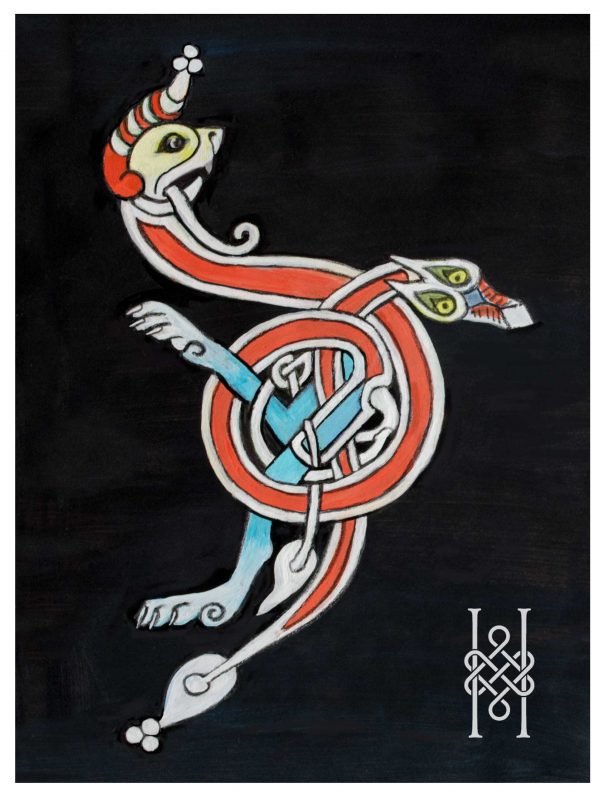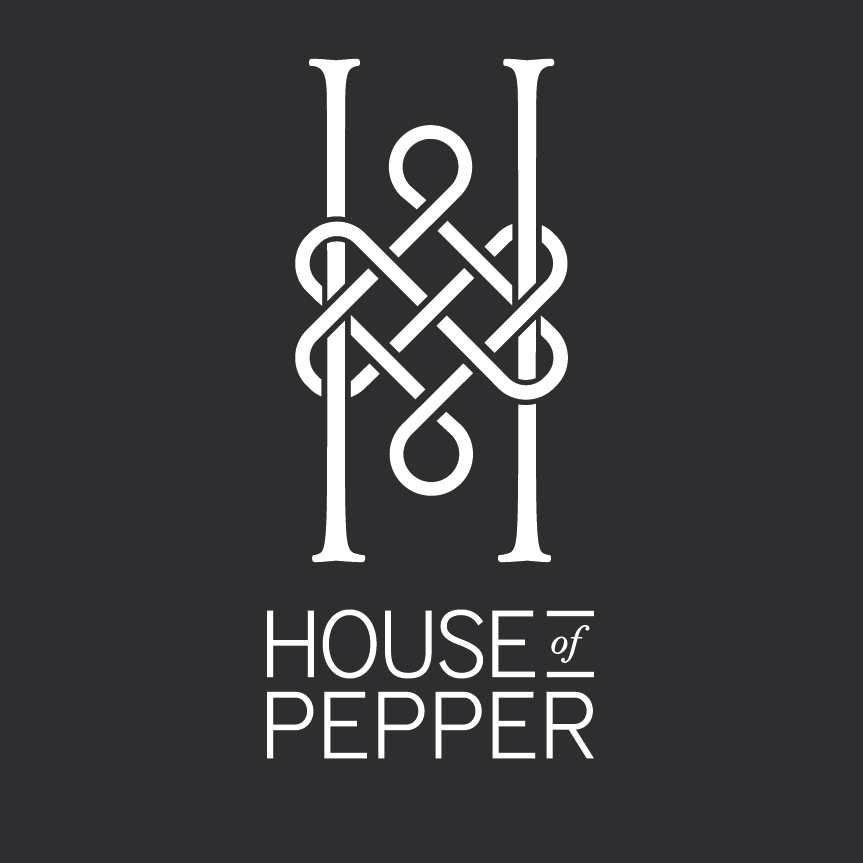Animal Letters from the Book of Kells
The monks wrote with the animals by entangling and interlacing animals and body parts around letters in the Book of Kells. Sometimes as woven ribbon style knots.
Before the Printing Press of the fifteenth century and mass printing of books as we know it today, writing and painting on parchment was called illumination. Gold and silver metal pigments in paints and other animal dyes were used to colour and light up the page. Made of calf skin or vellum the manuscript of the Book of Kells was cut into leaves or folios. Each double page was carefully ruled with a large margin and space for the script and decoration. Sometimes in carpet style panels.

Letter b entwined with a lion and knotwork
Decorated b Letter
In this first example we can see how much detail goes into an animal letter. This decorated letter from the Book of Kells uses the Irish half uncials.
Description: It is the small letter b and it is decorated with a single lion showing a tongue extension in a triquetra knot. Corresponding to the ascender serif is the blue extension to the head of the lion. It ends in a circular knot motif shown here in white. A motif that repeats above the paws.
Unusually for the time, this lion is incomplete and has no forelegs. Hind legs act as terminals and we can see the claws on the feet. An intertwined knot with a Trifoil ending (a motif from the Tree of Life) takes up the space between the legs and head. The manuscript monks liked to keep the design tight and closed. All spaces in between are filled up with knotwork and motifs.
This example is a mixed media painting that I have adapted from a drawing in The Celtic Patterns Painting Book by Aidan Meehan.
Decorated DI Letters

Lion and snake together in the letters DI to decorate the manuscript
These capital letters D and I are together as one motif. The D is a lion and the I is a snake and they are intertwined. As an animal motif the snake was not commonly used. It arrived later and it has been suggested that the snake was a specialty of one of the monk artists.
Description: In this design we see the snake head from above (bird’s eye view) with the eyes in two symmetrical lobes and with a patterned snout. The snake tail ends in a tassel with three little balls. Again, if this is a lion, it only has two legs as in the above animal letter. The tongue is extended to end in a spiral and the ear (or serif) appears as a crescent moon pattern in red stripes finishing with a tassel and three little balls. (It looks like a hat). The D letter again is from the uncials script with the swinging serif at the top. The lion has a smaller tassel tail flowing from the knotwork interlacing in the circle.
My mixed media painting is worked and adapted from a George Bain drawing from the book- Celtic Art, the Methods of Construction. These are early works and drawing them uncovers the degree of difficulty. I just can’t imagine drawing them as small as the monks did.
Where is the Book of Kells?
The Book of Kells was written in Latin on the island of Iona in Argyll, Scotland and later after the Viking raids that destroyed the Abbey, it was secretly transferred. It was sent to the monastery of Kells in county Meath in Ireland around 800 AD. There were 340 folios numbered 1 to 339 and it was the work of several distinct artists and scribes.
In 1953 the Book was repaired and rebound into four volumes. Each folio measures 33 x 25.5 cm. Every illumination is fresh and new and there is no repeat. There is no formula method shown anywhere in the manuscript but there is a distinctive style. Animal letters by the monks are a true mark of creative originality and supreme imagination.
Today the precious Book of Kells is housed in Trinity College, Dublin. Sadly, the Monastery of Kells was also destroyed and The Book of Kells was sent to Dublin in 1654 for safekeeping. The journey of survival of the great Book is tied up in secrets and stealth.
The HOP pages can be printed and used for education purposes.
